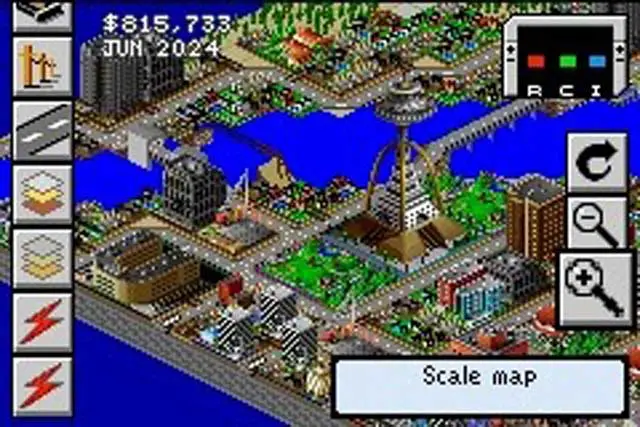 Sim City never gets old. Prior to the disastrous launch of the latest entry in the city-building simulator Maxis were on a ‘can do no wrong streak’. Which is probably why we saw Sim City games make their way onto almost every platform known to man. Including the Game Boy Advance.
Sim City never gets old. Prior to the disastrous launch of the latest entry in the city-building simulator Maxis were on a ‘can do no wrong streak’. Which is probably why we saw Sim City games make their way onto almost every platform known to man. Including the Game Boy Advance.
That’s right the evergreen franchise made its way to what was then the radically underpowered Gameboy Advance in what was basically a stripped down version of the PC original. And I found it to be the best way to experience the game despite being far from the best version of the game.
If you’ve played Sim City 2000 you’ll remember that it was when the game got serious. By that I mean it became more than just simple zoning and making sure the coverage of emergency services and standard necessary utilities covered every area of the city. All within budget of course. But city building was superficial and the utilities were limited to only electricity, with the only decision in that regard being whether to ruin the environment through coal or nuclear energy .
Sim City 2000 changed all of that, not only expanding the types of buildings that could be built, as well as expanding zoning from three classes to six, it also gave you some control over what went on below the surface with subways and water requirements being added as things to consider while building your miniature metropolis. These complexities, in addition to other improvements set Sim City 2000 worlds apart from its predecessor and brought it closer (yet still miles way) to being a real city-building sim.
But while water was a great addition and added to the depth of the game, subways proved far too complicated to build and I for one never really got used to how they worked and so my city became a series of congested roads and highways as my sims made their way too and from work. Think Sydney’s M4 and you’ll probably have a pretty good idea of what I made my citizens endure on a daily basis.
The GBA version, along with a whole suite of other things, did away with the non-sensical subway system in a move that streamlined the game so to make it more portable friendly. The GBA version of the game represents an abridged approximation of the PC game that makes it not only more simple, but more fun than the original. It turns out that doing away with some of the additions found between Sim City and Sim City 2000 makes for a more casual oriented game, perfect for the small screen audience. The result is a game that more closely represents the first Sim City than its sequel, but one that also maintains some of the depths of the sequel to make it almost a ‘best of’ game. In some ways the game feels like playing the original Sim City with an expansion that adds all of the Sim City 2000 buildings.
I’ve made it sound like Sim City 2000 lives entirely in the shadow of the PC original. And in some way it does. But don’t think that the GBA game isn’t a solid, addictive version of the classic city-building experience. Chances are if you picked up this version of the game you would get the same basic thrill as you remember from sitting in front of your PC with a slightly less intuitive control scheme.
In an era of smart phones that basically make the world go ’round, the fact that Sim City is on a portable device isn’t terribly impressive – particularly given that the Nintendo DS was home to two exclusive versions of the franchise. But back in 2003 when we still had something to aspire to in the portable video game space I found Sim City 2000’s compromises to be sensical, and endearing example of how developers had to cater to the humble specs of Nintendo’s handheld. More heartwarming though is the fact that developers cared enough to try and give GBA owners big console and PC experiences to call their own.

